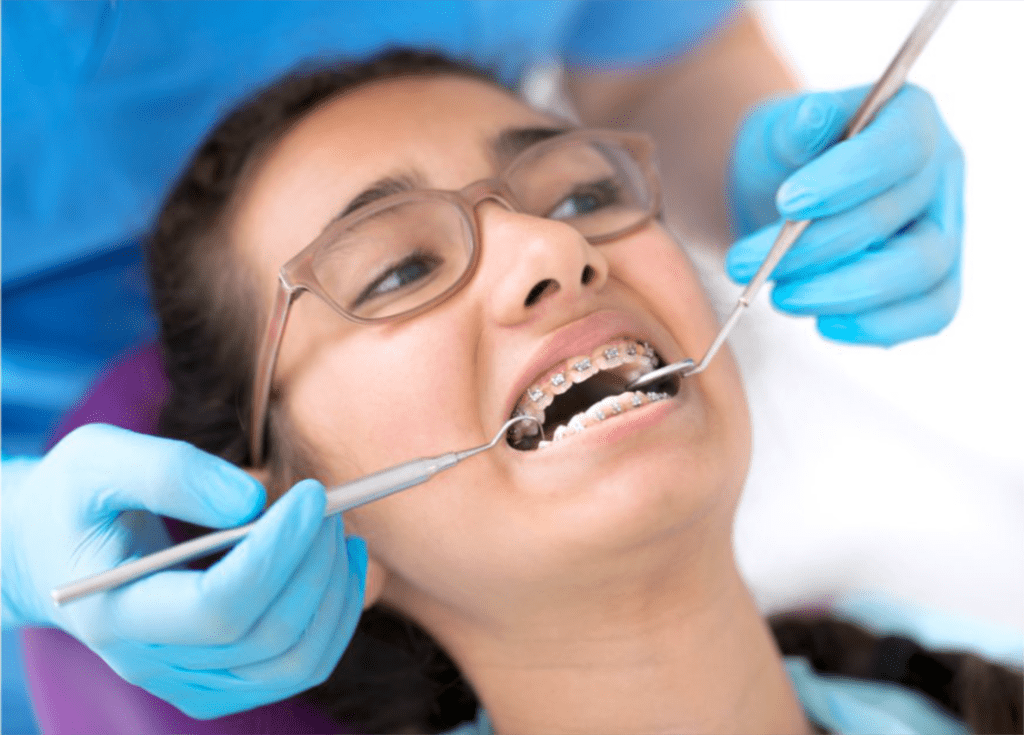You may or may not know this already, but in many cases, it’s true that the earlier the orthodontic intervention, the better! Today at One Love Orthodontics, we’re going to cover how early intervention helps kids and answer the question: Can early orthodontic treatment cure underbites in children?
What Is an Underbite?
An underbite is a dental condition in which the lower teeth protrude forward and overlap over the upper teeth. This results in the appearance of the lower jaw being more prominent. Underbites can vary in severity. Early detection and intervention by Dr. Dayan can be key for effective treatment.
Causes of Underbites
There are various reasons that kids can develop underbites. Before we discuss the solutions, let’s go over some of the main causes. These can also take effect in a combination of circumstances.
- Genetic Factors: Genetics play a major role in this condition; if there’s a family history of malocclusions or underbites, they can become more likely by default.
- Thumb-Sucking and Pacifier Use: While not an inanely harmful action, this natural behavior can become extremely harmful if it continues after a certain age. The consistent pressure can begin to cause jaws and teeth to shift.
- Jaw Growth Discrepancies: An imbalance of growth rates of the upper and lower jaws can lead to the development of an underbite.
- Early Loss of Baby Teeth: Losing baby teeth prematurely, either due to decay, trauma, or other reasons, can affect the eruption pattern of permanent teeth.
- Extended Bottle Feeding: Similar to thumb-sucking, this outward pressure impacts oral development.
- Environmental Influences: Mouth breathing, allergies, or respiratory issues can impact facial and dental shaping.
- Injury or Trauma: Trauma to the face or jaw during childhood can influence the development of underbites, especially if it affects the alignment of teeth and jaws.
- Neuromuscular Issues: These are conditions that affect the function of muscles and nerves involved in oral movements, which in turn lead to underbites.

Where Orthodontists Step In
Early orthodontic treatment is also called interceptive or Phase 1 treatment. It offers a number of benefits to children. The following examples apply specifically to underbites. We offer some, but not all, of these options in our own office.
- Braces: Traditional braces are a common and effective treatment for correcting this type of misalignment. Brackets are attached to the teeth, and wires are used to apply pressure, gradually shifting teeth into the desired alignment. The earlier this is addressed in a person’s life, the better.
- Palatal Expanders: When an underbite is caused by a narrow upper jaw, this device can gradually widen it, allowing for space and improving the overall bite.
- Retainers: This is, as you may know, the last step of most of our treatments. But it’s vital. Retainers are the means of preventing issues from relapsing over time, and this can apply to an underbite.
Other Benefits
In addition to underbites, there are a number of other benefits of early interceptive treatment in children.
- Guiding Jaw Growth: This stage allows for doctors to guide the growth of jaws, addressing discrepancies before issues grow more severe.
- Correcting Habits: As children, bad habits are sometimes formed and nurtured. We can do our best as professionals, in partnership with parents, to help reverse these habits as far as oral hygiene is concerned.
- Reducing Need for Extractions: An extraction is often the worst-case scenario for many patients later in life. The sooner we are able to tackle issues, the less likely an extreme measure like that one becomes.
- Improving Speech Development: Some orthodontic issues (including underbites) can directly impact speech in children, and how it evolves as they grow. We are able to improve these speech patterns through various forms of treatment.
- Enhancing Facial Symmetry: Early intervention can actually involve addressing skeletal issues, which occasionally work in tandem with dental ones, to improve overall symmetry.
- Boosting Self Esteem: The social life of a child in school directly impacts mental well-being. By helping with their overall dental appearance, they can be confident in their smile.
- Setting Them Up for Success: Phase 1 treatment often shortens or simplifies Phase 2, which usually involves actual braces being applied. The initial phase lays the foundation for proper alignment, making it a bit easier for a young patient.
- Preventing Trauma: Protruding upper or lower teeth can make trauma more likely through physical activity like sports. Straight teeth are less likely to be susceptible to these incidents.

Fixer-Uppers
One Love Orthodontics is made up of a team of incredible people who are all dedicated to the well-being of our youngest patients here in Brooklyn. We treat each child who comes into our office on an individual basis, working hard to meet their needs.
An underbite can seem like a serious issue—but we are here to help! For more information, you can reach our esteemed office at 718-635-9467.
